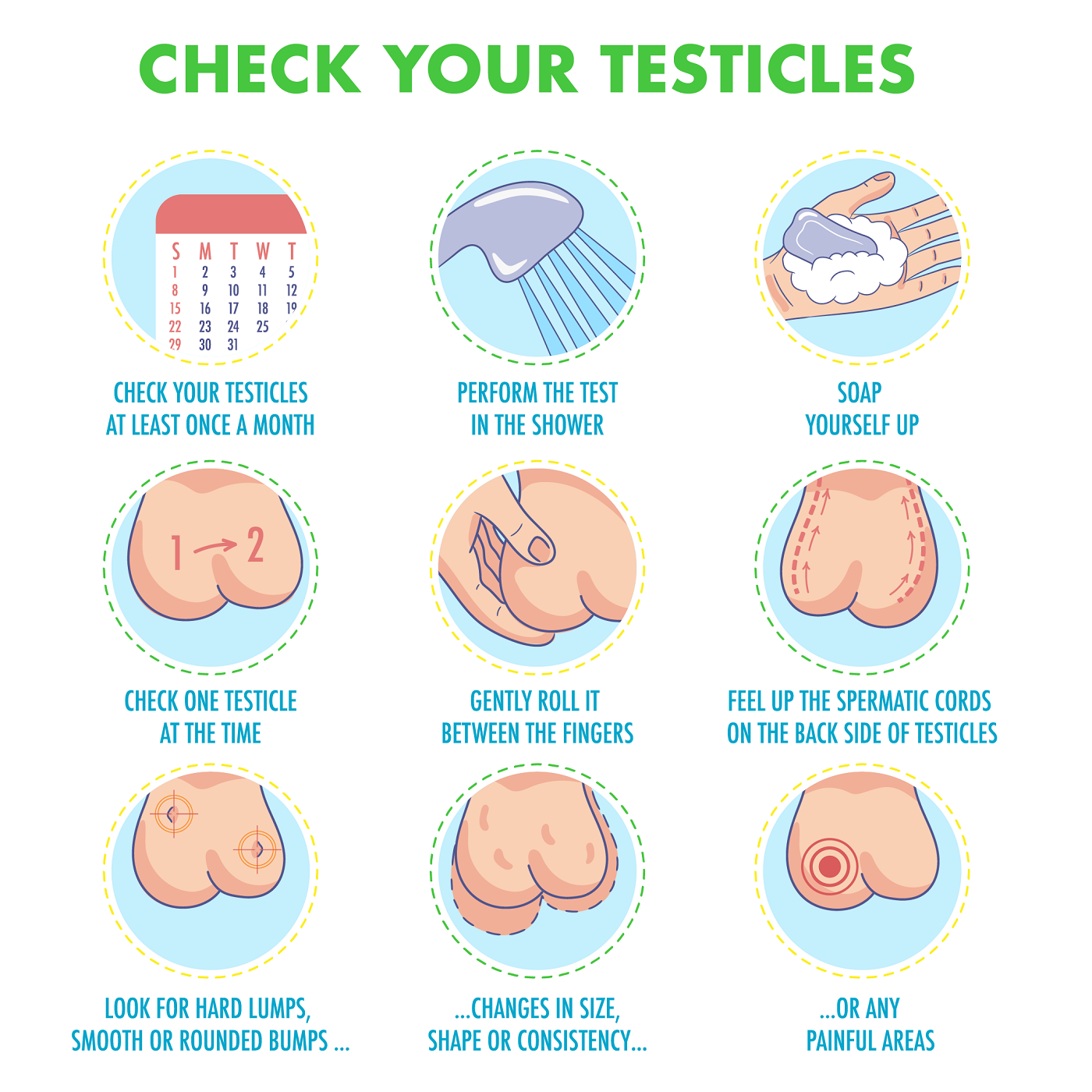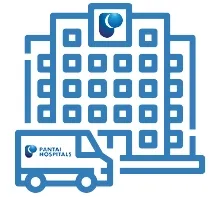Testicles are oval-shaped male sex organs that are a part of the male reproductive system. These organs are contained within a sac of skin known as the scrotum and are located on either side of the penis.
The testicles have two main functions. First, they act as the space for producing and storing the sperms for reproduction. Secondly, they also act as the location where male hormones like testosterone are made.
What are the types of testicular cancer?
Testicular cancer, which begins in the testicles typically affects males between the ages of 15 and 40. However, men can develop testicular cancer at any age.
Testicular cancer usually occurs when malignant tumours, which contain cancerous cells, develop in the tissues of a testicle. These cells grow uncontrollably and can spread all around the body via the bloodstream or the lymphatic system.
There are different types of testicular cancer:
- Germ cell tumours
- Over 90% of testicular cancers start in germ cells, which are the cells responsible for producing sperm.
- Seminomas and non-seminomas are the two major subtypes of germ
cell tumours:
- Seminomas grow and spread more slowly and occur later in life.
- Non-seminomas grow and spread rapidly and develop earlier in life.
- Stromal cell tumours
- Cancer begins in the stroma which are hormone-producing tissues. This cancer is found in up to 20% of childhood testicular cancers, but less than 5% of adult testicular cancer cases.
What are the risk factors for developing testicular cancer?
Men who are at risk for being diagnosed with testicular cancer include:
- Having a family history of testicular cancer
- Having an undescended testicle (cryptorchidism)
- Having abnormal testicle development through conditions like Klinefelter syndrome
- Personal history of testicular cancer
What are the signs and symptoms of testicular cancer?
The following are symptoms that can be attributed to testicular cancer:
- A lump in either the scrotum or testicle
- A sudden or abrupt build-up of fluid in the scrotum
- Swelling of the scrotum or testicle
- A feeling of sudden heaviness in the scrotum
- Pain in the scrotum or testicle
- A shrinking testicle
- Dull aches in the groin area or lower abdomen
- Tenderness in the breast tissue
- A difference in appearance between the testicles
If you feel the presence of a lump, it is advisable to see a doctor to rule out cancerous growth at the earliest stage. Visit a doctor also if there is any pain or swelling present in the testicles or groin area.
How do doctors diagnose testicular cancer?
Testicular cancer is usually diagnosed once a lump or an abnormal change in a testicle is found during self-examination or unintentionally.
Some common techniques that your doctor may use to diagnose testicular cancer include:
- Physical exam
- Ultrasound
- Serum tumour marker test
- Inguinal orchiectomy (surgery to remove the testicle)
- Biopsy
- Imaging tests such as computed tomography (CT) scans, X-rays, magnetic resonance imaging (MRI) scans
- Blood tests
How is testicular cancer treated?
The course of treatment for testicular cancer is determined by the stage and type of cancer as well as the patient’s health and preferences. Testicular cancer treatment options include:
- Surgery:
- Radical inguinal orchiectomy: This procedure, which involves the removal of the testicle with the tumour may be used for the treatment of both seminomas and non-seminomas.
- Retroperitoneal lymph node dissection (RPLND): This form of surgery involves the removal of the lymph nodes and large blood vessels behind the abdomen.
- Radiation therapy: High doses of radiation are utilised to destroy the cancer cells.
- Chemotherapy: Employs certain drugs (e.g., bleomycin, cisplatin, and etoposide) to kill cancer cells. Chemotherapy is beneficial for seminomas and non-seminomas.
Learn more about the different types of treatment technologies to treat testicular cancer.
What can I do to reduce the risk of developing testicular cancer?
Testicular cancer cannot be totally prevented. However, it is advisable to routinely perform self-examinations at least once a month.
How to check your testicles

The best time to perform a self-examination for testicular cancer is after a bath as the scrotum would be relaxed, allowing for any abnormalities to be easily identified.
Start with examining each testicle with both hands and fingers. Roll the testicle between your fingers and thumbs. Feel for the presence of any lumps, which may vary in size.
There will be a cord-like structure present at the back and on top of the testicle. This structure is the epididymis and should not be mistaken for a lump.
Do I need to get screened for testicular cancer?
Testicular cancer is highly treatable and a great percentage of patients make a full recovery. Regular self-examinations and yearly physical exams can help uncover any changes that may indicate testicular cancer.
Consult your doctor to determine if you would benefit from a testicular cancer screening.
Make an appointment at Pantai Hospitals
Early detection of testicular cancer makes it easier to treat the disease with effective and appropriate treatment. A dedicated multidisciplinary team of specialists and oncologists at Pantai Hospitals is available for consultation to provide the best care and assistance to patients through screening, diagnosis, and treatment.
Get in touch with us to book an appointment today if you have any concerns or questions about testicular cancer treatment options.
Pantai Hospitals have been accredited by the Malaysian Society for Quality in Health (MSQH) for its commitment to patient safety and service quality.


 Request an Appointment
Request an Appointment.webp?sfvrsn=276ce14_1/vector-(3).webp) International Patient
International Patient

.webp)

 Find A Doctor
Find A Doctor



.webp?sfvrsn=20763f7d_21)
.webp?sfvrsn=f2a2c343_12)





